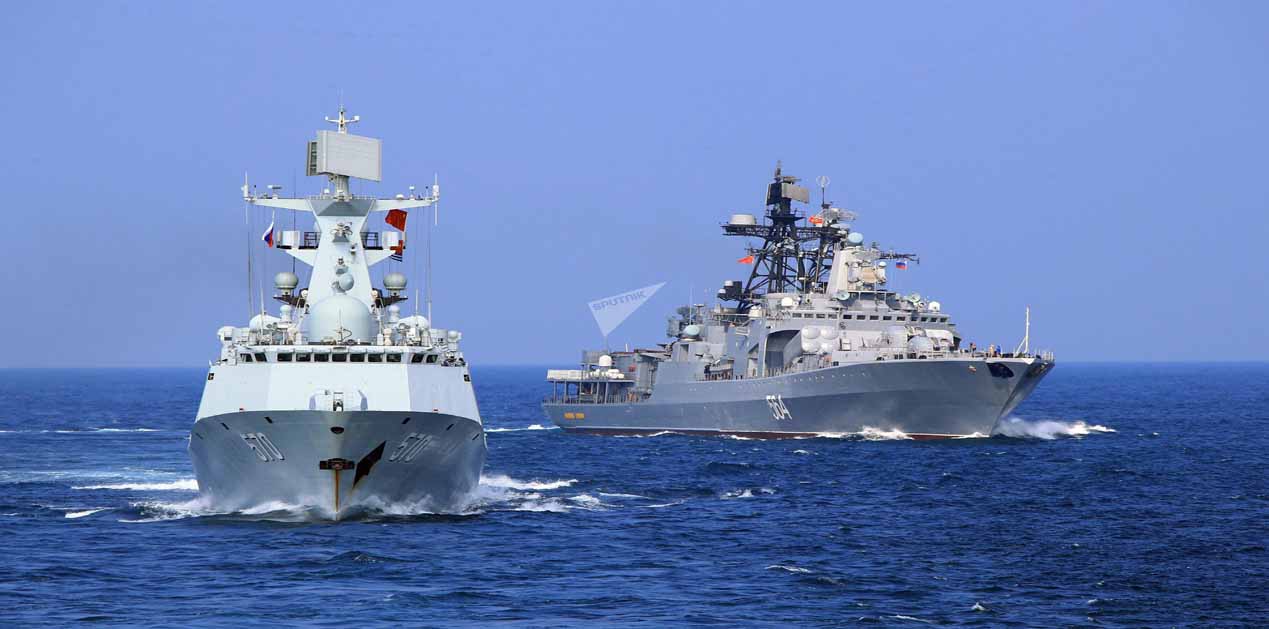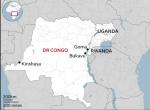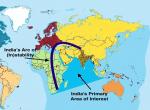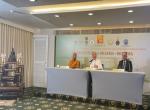The massive People’s Liberation Army (PLA) Navy exercises conducted in the second week of April near Hainan and further east, and review of the same by President Xi Jinping come in the wake of evolving strategic situation at the global and regional levels. The stimulus for such a grand naval exercise also flows out from the internal developments in China where Xi has ushered in defence reforms and has consolidated his power. The naval exercise involved an armada of 48 naval vessels that included frigates, destroyers, submarines, 76 aircrafts, 10,000 service personnel, and above all, the lone aircraft carrier ‘Liaoning’ with its compliment of J-15 fighter jets.
At the global level, the US in its National Security Strategy and National Defence Strategy has called China as primary ‘strategic competitor’ before Russia describing both of them as ‘adversaries’. The focus, according to the US, is more now on ‘great power competition’ and less on terrorism. Thus building of powerful militaries is inescapable. And this major Chinese naval exercise could be viewed as China showcasing its growing naval capabilities in the background of such assertions by the US.
Overlapping the duration of PLA Navy’s manoeuvres was the visit of US Aircraft Carrier ‘Theodore Roosevelt’ via Singapore to Philippines in addition to the frequent American Freedom of Navigation Operations (FONOPS) in the South China Sea. Earlier, the US Aircraft Carrier ‘Carl Vinson’ had visited Da Nang in Vietnam for the first time. Such naval operations by the US have an idiom and value of their own and create security challenges for China.
At the regional level, there is a complex situation in the South China Sea where there are sovereignty disputes and many claimants. The ASEAN countries have also been looking for outside powers to balance China’s rising capabilities and assertiveness. There is also the question of the concept of ‘Indo-Pacific’ and a ‘Quadrilateral’ (QUAD) of democratic powers that is yet to acquire some salience, but is generally perceived by Beijing as an effort to contain China. The US on its part has been advocating joint patrolling in the South China Sea by its allies and friends.
The exercise is also a message to outside powers besides the US, for instance to Australia, India or even UK and France not to get themselves embroiled in the complex South China Sea issue by taking part in FONOPS or otherwise.
Thus, the PLA Navy exercise demonstrates China’s expanding naval and force projection capabilities and its willingness to protect China’s core interests, especially so in the South China Sea. In January this year, Xi while addressing 7000 troops, had stated that by protecting Chinese interests, assets and people abroad, the PLA will be at the vanguard of ‘China Dream’ through the ‘Belt and Road Initiative’ (BRI). Hainan has been developed as a major naval base of the PLA Navy and along with other naval bases along China’s Southern coast it is a major launch pad for China’s Maritime Silk Road (MSR) and BRI. Further, the increased naval capabilities reflect China’s willingness secure its interests associated with MSR and BRI through military means.
The exercise is also a signal to the ASEAN countries that with the China’s expanding military deterrence capabilities, it is better to seek accommodation with Beijing rather than seeking to counter-balance China with the help from extra regional players. But it is a different matter whether countries most affected by China’s assertive policies would indeed do so; on the contrary, they might be pushed into the arms of other powers.
For the internal audience of China, the exercise also demonstrates President Xi’s strong commitment to building a powerful military as part of rejuvenation of China and realisation of China’s dream in a time bound manner. Xi, during his address to the participating troops stated that it has always been China's aspiration to have a strong navy which serves as a key guarantee to achieve the great rejuvenation of the Chinese nation. And without fail, as he is wont to, he exhorted naval officers and soldiers to fully implement the Party's absolute leadership over the armed forces. Though this might be the usual party-line it also exhibits anxieties that the Party’s hold over armed forces might weaken because of variety of socio-economic changes occurring in China’s long march towards modernisation and militarisation.
Coming to the geo-political aspects, there has been a strong push-back on the rising ambitions of China due to rapid military modernisation and acquisition of comprehensive national power that has challenged the existing world order where the US continues to be pre-eminent also power. This push-back by the US and the forces aligned or partnering with it has created apprehensions on the part of China as to how to meet such challenges. Apparently, it should be well realised by China that it has many vulnerabilities till the time its armed forces complete its accelerated modernisation by 2035, and then become a world military power by 2049. Meanwhile, this exercise can be construed as a response to the growing push-back.
At the operational level, the exercise also exposes limitations of the naval capabilities of PLA Navy, in that the exercise took place close to the shores. Though J-15 jet fighters did operate from the aircraft carrier, they remained within the radius of action of the shore based airfields. Therefore, it can be inferred that the PLAN is yet to acquire a true blue water capability or an aircraft carrier task force group that can operate far off from the shores. That situation might improve somewhat when the second aircraft carrier joins PLA Navy next year. But it will take PLA Navy a very long time to be able to send carrier task force groups for power projection operations like the US Navy does so very easily.
On the other hand, it can also be inferred that there is a mismatch between China’s geo-political ambitions and its current capabilities.
(Views expressed are of the author and do not necessarily reflect the views of the VIF)
Image Source: https://sputniknews.com/politics/201707241055834626-russian-chinese-joint-drills-significance/











Post new comment